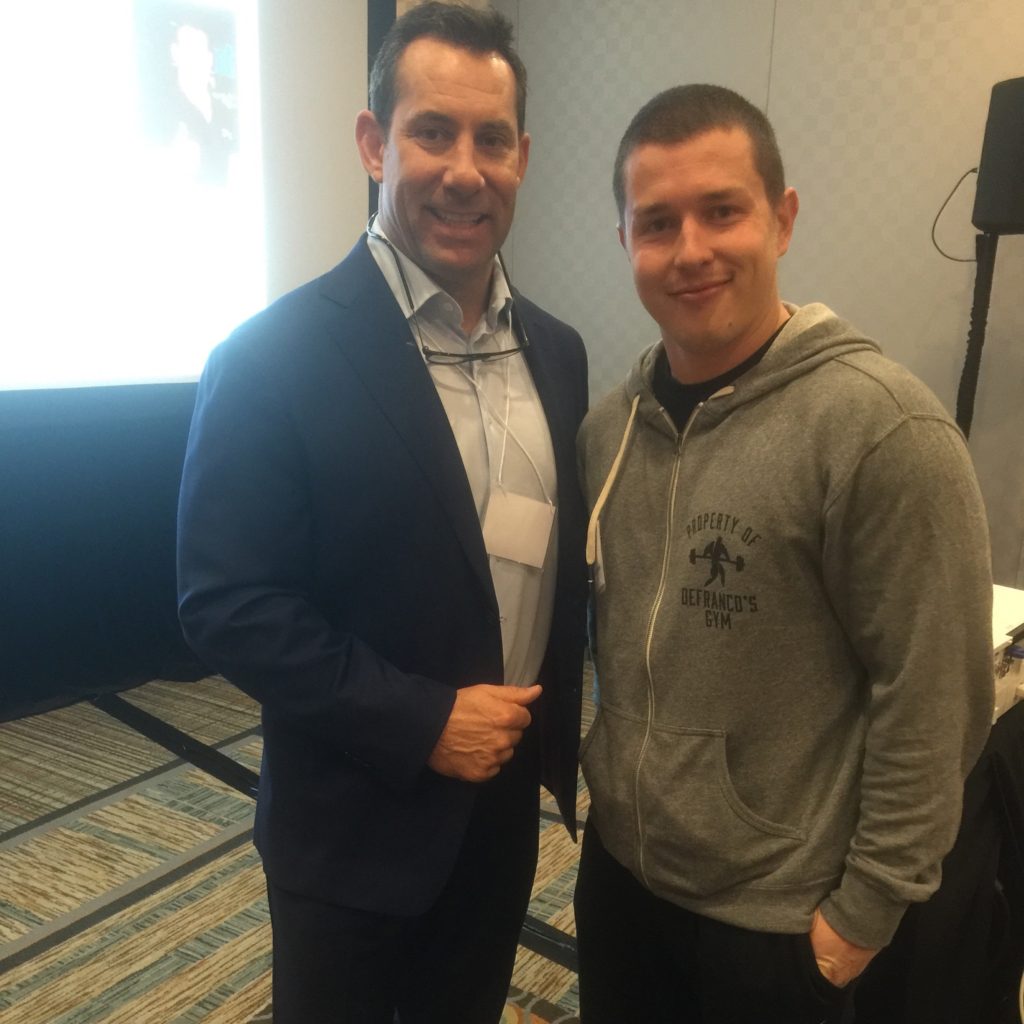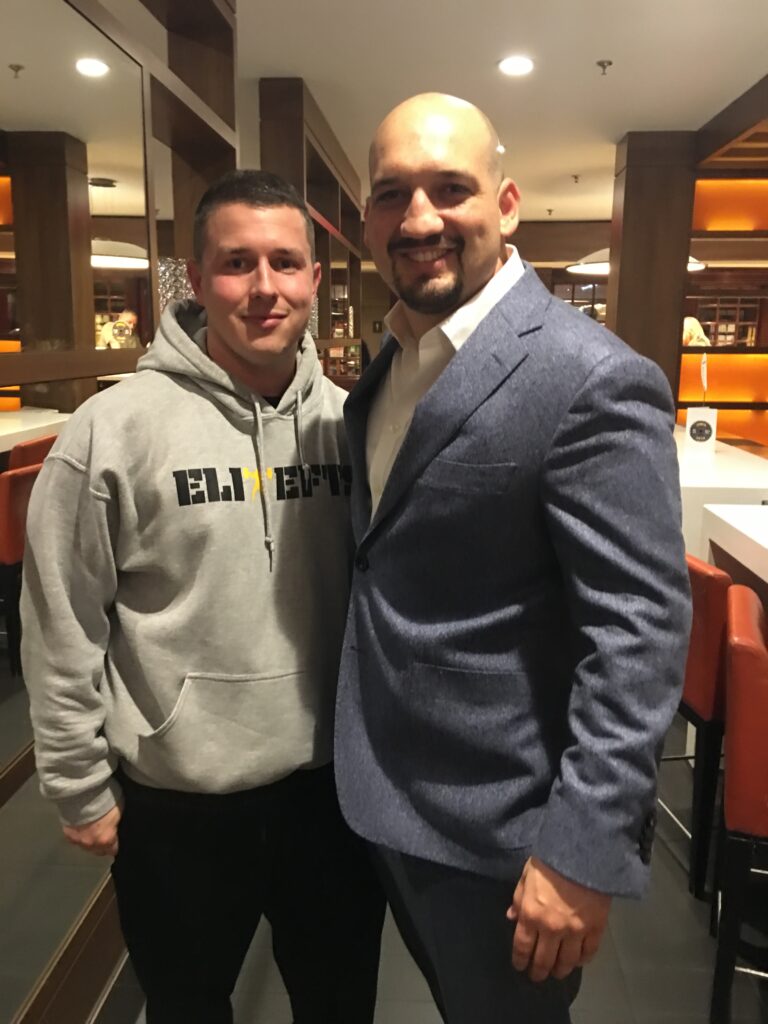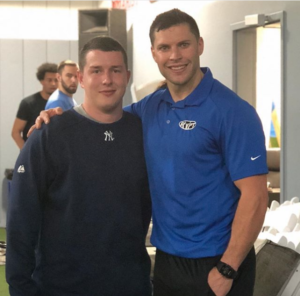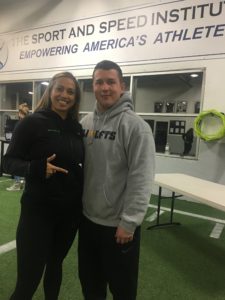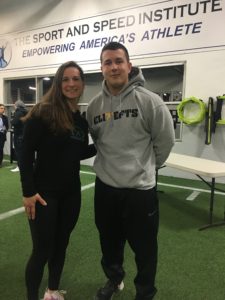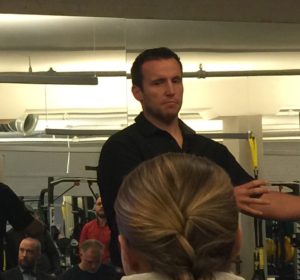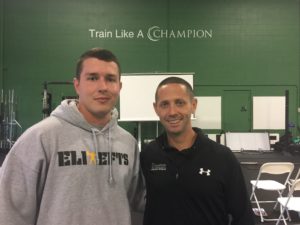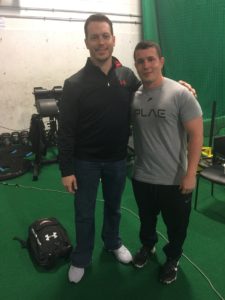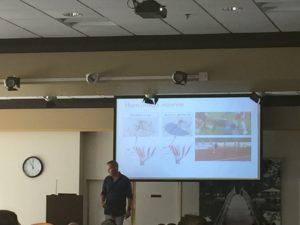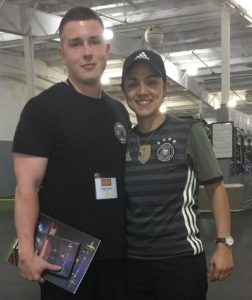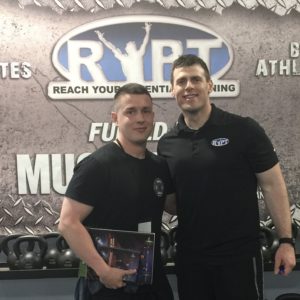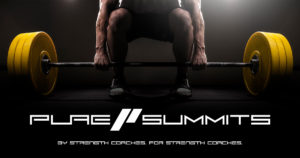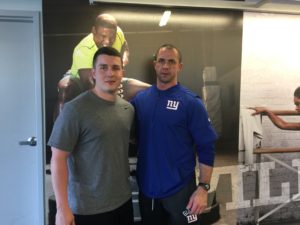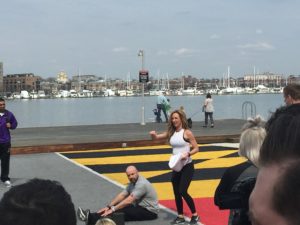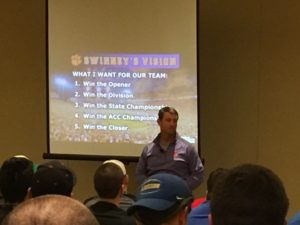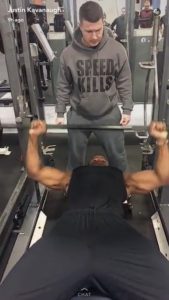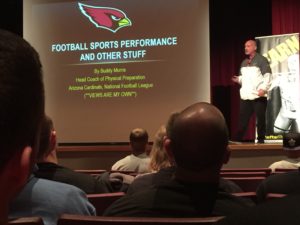
Man, there’s so many good thoughts going through my mind after the weekend at CVASP. The hardest part about writing this post is getting them all organized. Fair warning: this is going to be a long post.
The best way I could summarize the trip is this: After driving home five-plus hours in the pouring rain and getting home at 2 a.m. on Saturday, the first thing I wanted to do was look through the three volumes of “The Manual” that I just bought.

Volumes 1, 2 and 3 of “The Manual”.
I was running on such a high after the trip. This was my second time attending the Central Virginia Sports Performance Seminar down at the University of Richmond and each time I’ve come back with this intense motivation to study more. When you see the lineup of speakers Jay DeMayo is able to put together and the complex information being shared along with the caliber of people in attendance, it’s no wonder why this event simply goes by The Seminar.
2017 RECAP
If you don’t leave there a better coach and wanting to raise your game, then you’re in the wrong profession. Jay does such an awesome job running this event and he’s played a role in my development as a coach, even though he doesn’t know it. Through this event and his podcast, he’s exposed me to many of the top coaches in the field who aren’t internet stars, but know training backwards and forwards. Through both platforms, he’s introduced me to training modalities and concepts that I never knew of before. After being a bit overwhelmed from the event last year, I swore I would study harder so I could better understand and appreciate the knowledge being shared. Last year I left with ideas I needed to explore deeper. This year I left with things I could implement right away.
I might be wrong, but I believe Jay is also a big baseball fan. It was only fitting that on the weekend following the MLB All-Star Game he brought together a cast of speakers that resembled the American League’s starting nine. Dan Pfaff, Chris Korfist, Jeff Moyer, Devan McConnell, Keir Wenham-Flatt, Patrick Ward and Teena Murray all delivered on stage and I will get into that more shortly.
Last year’s event gave me a look into the application of Dr. Michael Yessis 1×20 system through Matt Thome of Michigan Tech’s presentation. I knew there would be some 1×20 practitioners in attendance, so I bought the book and studied the system. With a base understanding of how it worked, I wanted to use the time during the social to dig deeper and make sure I got the chance to meet Yosef Johnson, the owner of Ultimate Athlete Concepts and publisher of pretty much all of the major training books in this industry. I got far more than I ever expected.
Yosef couldn’t have been better. He really took the time to go over the 1×20 system with me and was ready to hook me up with any person could be of help. He treated me like he had known me for 20 years. If you could see inside my head, you’d see my brain trying to latch on and remember every little detail he was sharing. It was hard because in the back of my head I was thinking, “I can’t believe there is one of the best guys in the industry willing to pull me aside and break things down for me.” Every time you hear someone shout him out on a podcast, understand that it’s the truth. He’s has good of a person as everyone says he is.
That would have been enough, but then he calls over Chris McCormick, the head strength and conditioning coach for Olympic sports at Florida Atlantic University. Now I have both of them talking to me and Chris is talking training with me and explaining how he uses the system. Chris then took my email and wound up sending me a boatload of information on 1×20 from power point presentations, notes he’s taken from other coaches along with Excel sheets on how he’s used the program. I was blown away.
I was good to go, then all of a sudden I get to talk to Scott Hobbs, the associate strength and conditioning coach at Army. Scott was just another awesome guy who told me his interesting backstory on how he travels over to the US from London and broke down how the training is at Army. I always love to hear from strength coaches of collegiate and pro teams to hear how they structure training and he was more than willing to answer any question I had. Same could be said of Cristian Plascencia of Onnit. I’ve always had good interactions with the people of Onnit and Cristian continued that trend. He was another stand-up person as he answered a bunch of questions I had about Onnit and discussed what they had going on with the pro and college football players they were training. He also gave me some free samples of my favorite supplement, Shroom Tech Sport, which is always a plus.
Remember, I’m not always the most social at these gatherings because I don’t know if I’m up to par with these coaches, so having all this happen all at once was unbelievable for me. I’ve been snubbed plenty of times. I was starting to lose faith in the industry and just didn’t have that same desire to meet people. There’s coaches who preach growth, helping others and seeking out help, but then are the complete opposite when you meet them. CVASP showed me there’s still plenty of good in the industry if you look in the right places.
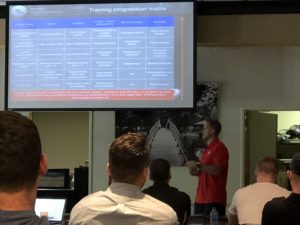
Keir Wenham-Flatt going through his training progression matrix.
Now, it’s time to get into the presentations. Keir Wenham-Flatt, an assistant S & C coach at Richmond who’s also been a rugby strength coach all over the world, led it off on Friday discussing his system on getting athletes back after injury. What stood out the most to me was what I call the “CVASP slide”. It’s the one I’ve noticed at CVASP the most where some presenters have this one slide that’s just loaded with information. Keir’s had this entire system broken on how they progress an athlete coming off injury through linear speed, agility, combat, jumps, throws, plyos, ballistic and strength exercises. His “training progression matrix” laid it all out for us and showed how each exercise builds off of the previous one. I just got an athlete come to me after suffering an injury and he Keir delivered a line that stuck with me: “our job is to prepare the tissues and the athlete has to earn the right to use intensive loads. Sadly, none of his entertaining Instagram stories were included.
Patrick Ward of the Seattle Seahawks closed out the first day giving us a look into what sport science really is. I’ve heard plenty of presentations on the new technology being used, but Patrick really focused on the why. He showed that it’s not just about having all of the gadgets, but making sure you have the right tools necessary to measure exactly what you’re looking for. Even though I probably won’t be using any of the new-age tracking tools out there, I loved the part of his talk where he had to tinker with things so he could see the effect of every players movement on the field. I’m not the right person to give his presentation it’s proper due, but hearing his process and finding your “why” behind what technology you use was pretty interesting to hear from someone who works with an NFL team.
Saturday started with a familiar face as I got to hear Devan McConnell, the head hockey performance coach at UMass Lowell, speak again. I heard him speak in December in New York and he was the perfect coach to hear after Ward’s presentation the previous day. Devan explained the why behind all of the tech he uses with his hockey players and showed that you can use technology on a budget. This gave me a little hope that I may be able to get into technology game if I get my own facility. I like how he broke down how he tested the jumps and any questions I thought I would have, he answered throughout his presentation.
PRO COACHES CLINIC RECAP
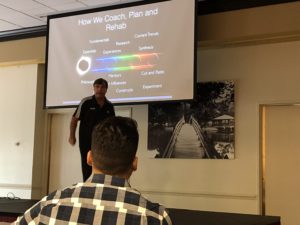
Dan Pfaff gave a complete presentation on sprinting at CVASP.
Then, for the first time, I got to hear the legendary Dan Pfaff present. His speed presentation lived up to the hype. There was so much to take away, but I loved how he gave us all of the key performance indicators for acceleration, broke down all of the stages of a sprint and then went through slow-motion video to give us a visual look. When it comes to learning about speed, I need to hear and see what’s happening at the same time to understand it and this presentation did it for me. The presentation stuck with me even more because I got to listen to Justin Kavanaugh talk sprinting with some coaches at the social the night before and he hit on some points that Dan discussed in his presentation. What also made me think was how he discussed teaching athletes to run out of unique positions or recovery positions, since they are rarely in a stationary start during the game. His “mailbox system” for working with groups was also an interesting tidbit I never considered. Just listening to Dan question trends and just easily rattle off all of the factors necessary for being a proficient sprinter was just a great experience. His presentation made me think about what I do, as well as give me things I could change immediately.
Jeff Moyer, of Dynamic Correspondence Sports Training in Pittsburgh, was another coach I was anxious to hear and because of him, I now have a better understanding of sports vision training. Before, I thought it was just about touching things on a screen or hitting light switches, but he showed the why behind it. He discussed how there’s so much more behind it and gave us specific methods to use for different performance issues. He went deep into the muscles of the eye and showed how vision, not just physical skills, could be the missing link for an athlete. As a former baseball player, he showed how certain drills could be implemented to help a hitter. He gave us stuff that was cheap and could be used right away. He was even gracious enough to take the time to give me five drills I could use with one of my players who is struggling with picking up the ball while hitting. I never thought I would be able to include vision work into my athletes program, but am a hell of a lot more confident about it now after Jeff’s talk.
As I said earlier, I love hearing about the dynamics inside a college or pro organization. Teena Murray, the director of sports performance at Louisville, gave us a glimpse through the Louisville High Performance Model. It was interesting to hear about all of the different things Louisville uses to bring all of its groups inside of the department together. I was also intrigued to hear how Louisville is not only trying to model itself similar to how some of the best pro sports teams are, but taking things from some of the best companies in the country. It was eye-opening because these aren’t things you consider while watching these teams play in person or on TV. All you see is what happens on the field and not all of the other components working.
Chris Korfist closed The Seminar with an amazing presentation on the feet and ankles in regards to sprinting. It was only a year ago through a podcast I heard from Jeff Moyer on the drive down to CVASP and through some of the presentations last year where I began to realize the importance of the foot and ankle. Chris explained that the feet, ankle and toes account for 70% of running speed and we need to make sure our programs address that. He then made us take off our shoes and socks and put us through some drills we could use with our athletes to help them address it. The information he shared in his presentation, along with the slow-motion videos he showed, really built upon what I knew about the feet and ankles and gave me a much better understanding of them. This was a great presentation to end the event and I already have athletes with their shoes off and standing on their toes.
As you can see, there was a lot I took away from this event. There was more than the 2,000-plus words I used, but I tried to make it all somewhat digestible. This event had it all for me, from top-to-bottom stellar presentations and a social where I was able to meet and talk with some great people in this industry. Not that he needs my affirmation, but Jay DeMayo is one of the best this industry has to offer. I might not have the experience yet, but I’ve met a lot of people in this industry and I’ve seen through everything Jay puts out that he has the best interests of everyone in the sports performance community’s best interests in mind.
I’m ready to start getting into these books, training up my athletes and preparing for next year’s event because I know it’s going to be another good one.
